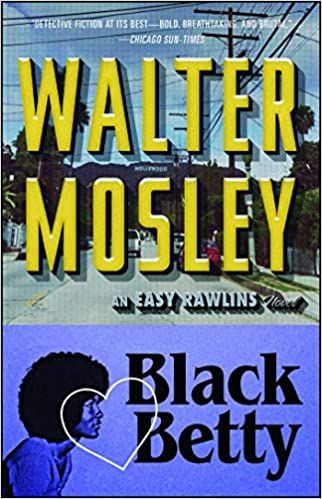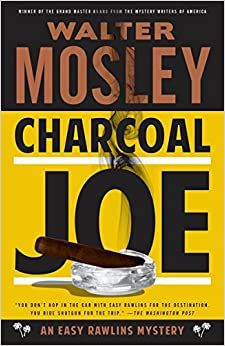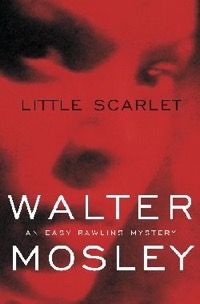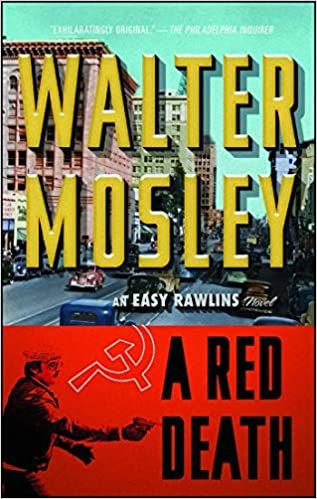Walter Mosley, a Los Angeles native born in 1952, who now resides in New York and Los Angeles (Mosley and I shared the same high school, Alexander Hamilton High School, a school that often appears in the Easy Rawlins series) has also been the recipient of the O. Henry Award, The Mystery Writers of America’s Grand Master Award, a member of the New York State Writers Hall of Fame, a Grammy, several NAACP Image Awards and the Pen America’s Lifetime Achievement Award. Readers appreciate the clarity and the enlightenment that Mosley’s books bring. David Steinberger, Chair of the Board of Directors of the National Book Foundation, announced their choice of Mosley for the award in early September, stating: “Mosley is a master of craft and and narrative, and through his incredibly vibrant and diverse body of work, our literary heritage has truly been enriched.” Of the 60 books that Mosley has published, 14 comprise the Easy Rawlins Mystery Series. For education and elucidation regarding the social, political, and cultural fabric of Los Angeles from the 1950s through the 1960s, read the Easy Rawlins books. The genius of Mosley and his immortal character Easy Rawlins has often been compared to the noir novels of Raymond Chandler or Dashiell Hammett. But Mosley goes a great deal further with Easy Rawlins: these are not the lightweight atmospheric stories involving the very usual suspects of bad women and weak men. Mosley infuses Easy Rawlins with a strong plot line in his stories, but every Easy Rawlins story lays bare the brutal effects the country’s historical racism has had on his Los Angeles characters. Listed below are six Easy Rawlins mysteries that will change your life in a good way. You will become a devotee of Easy Rawlins and of Walter Mosley. “It was a rhythm more satisfying than good music. I could have spent a whole life watching my children grow. Even though we didn’t share common blood I loved them so much that it hurt sometimes. I seemed to collect children in my line of work; doing ‘favors‘ for people. I took Jesus out of a life of child prostitution before he was three. I’d caught the murderer of Feather’s white mother. It was Feather’s grandfather, who had killed his own daughter for bearing a black child.” “On that early morning ride from Watts to the sea I considered John’s words. We came from dark skins, darker lives, and a slim chance of survival. The fact that we once knew each other in Fifth Ward, Houston, Texas, and that we were both still alive and ambulatory, was a miracle in itself. Where we come from he’s dead was as common as he’s sick or he’s saved.“ “I was quiet for a long while after that. Ruby was a truth that I didn’t need to know. I wasn’t afraid of or repulsed by her, but she was so loose in her approach to life that she flung doors open that wanted to stay closed.” “It wasn’t the first time I had met someone like her. And I didn’t hate her for hating herself. If everybody in the world despises and hates you, sees your features as ugly and simian, makes jokes about your ways of talking, calls you stupid and beneath contempt; if you have no history, no heroes, and no future where a hero might lead, then you might begin to hate yourself, your face and features, your parents, and even your child. It could all happen and you would never even know it. And then one hot summer’s night you just erupt and go burning and shooting and nobody seems to know why.” “I went down Central. The sidewalks were pretty empty at midday, because most people were hard at work. I had solitude but I soon realized that there was nothing for me to consider. In the forties and fifties we obeyed the law, as far as poor people could, because the law kept us safe from the enemy. Back then we thought we knew who the enemy was. He was a white man with a foreign accent and a hatred for freedom. In the war it was Hitler and his Nazis; after that it was Comrade Stalin and the communists; later on, Mao Tse-tung and the Chinese took on an honorary white status. All of them bad men with evil designs on the free world.” “A car pulled up to the curb just then. It was a dark Ford with four male passengers. Most cars in Southern California transported a solitary driver, a couple, a double date, or a family. Four men in a car spelled trouble if there wasn’t a construction site somewhere in the vicinity.”





